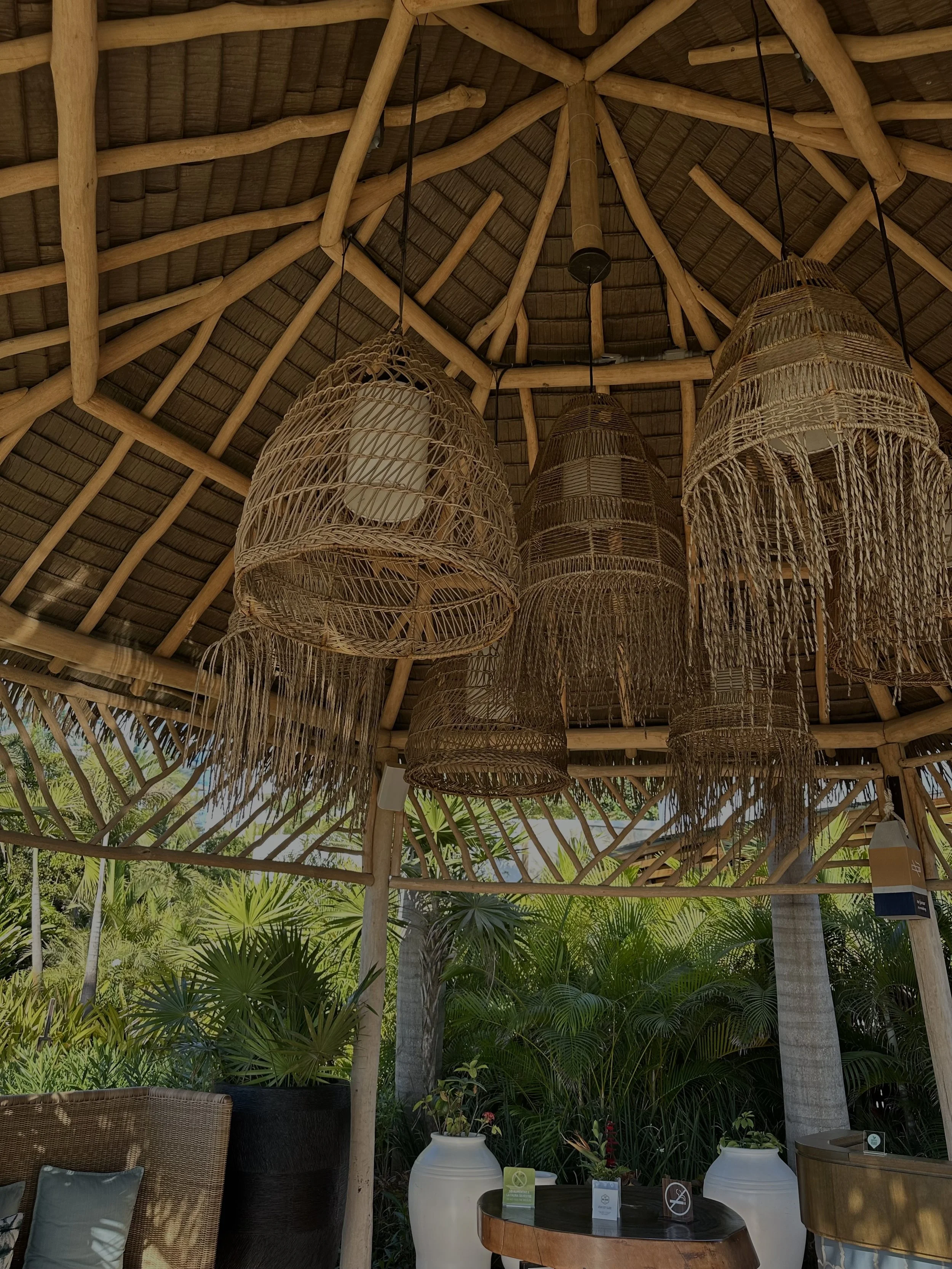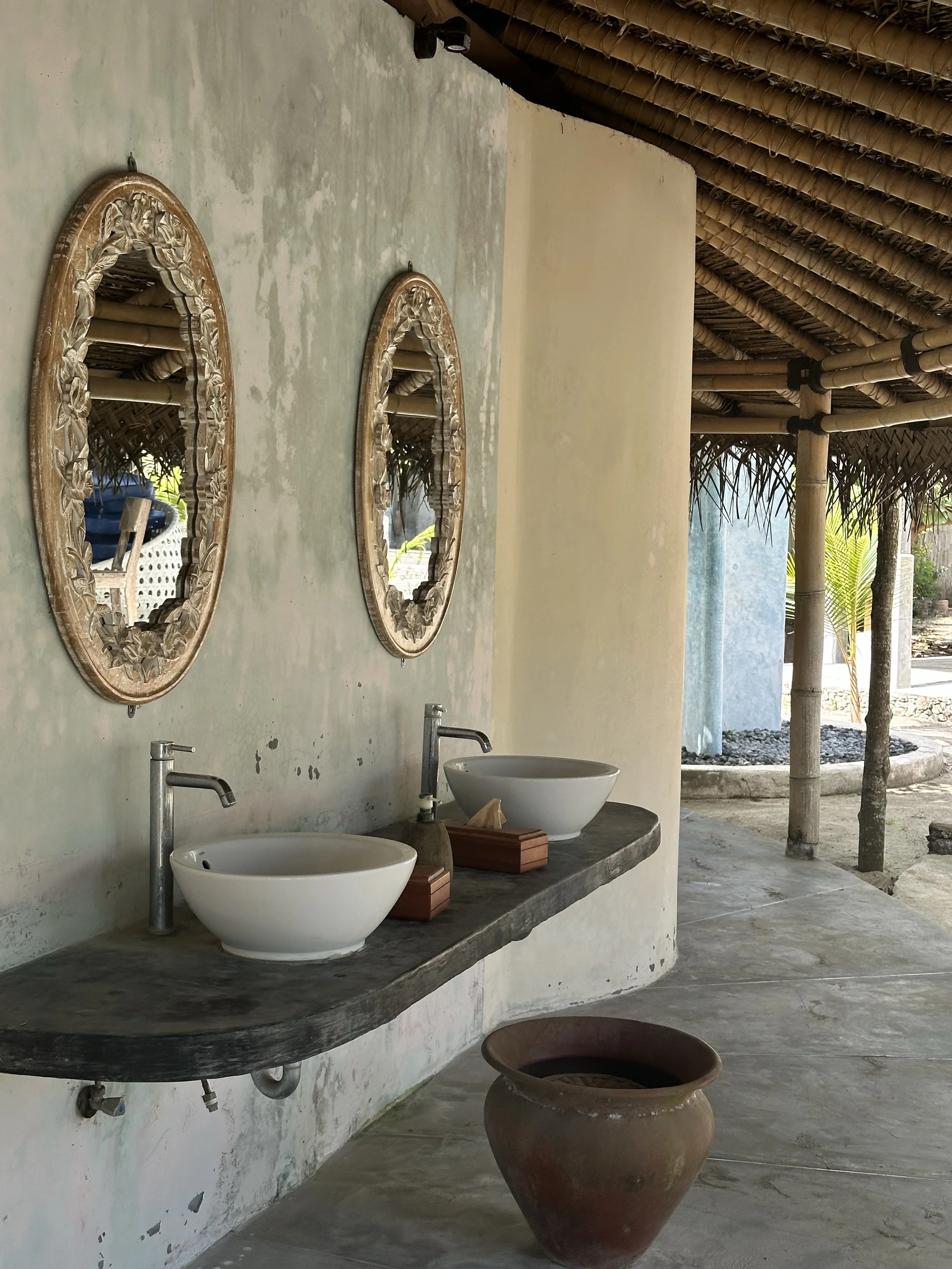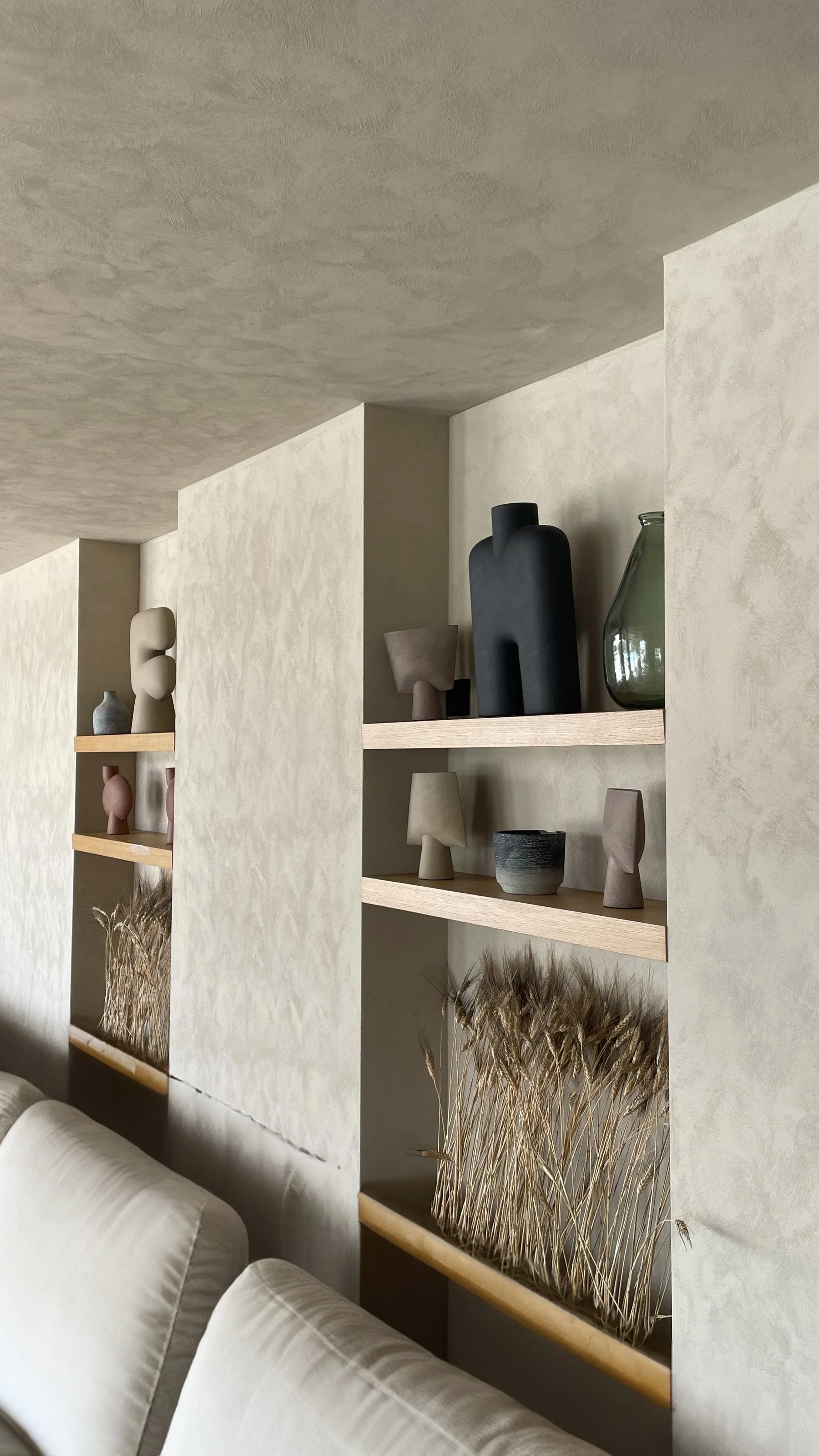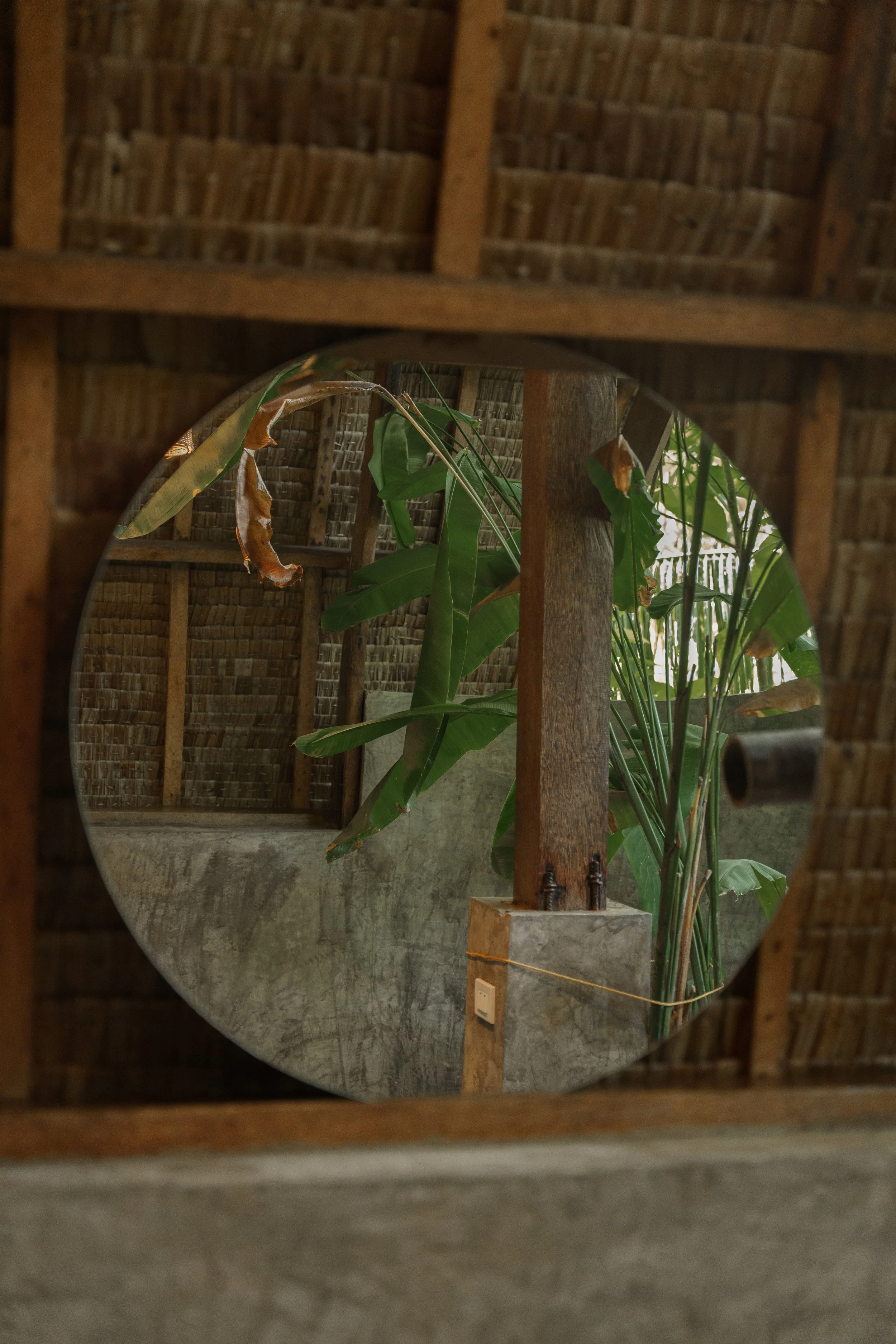The Slow Traveller: The Soulful Seeker of Stillness, Story & Place
by azulomo | 7 min read
Meaning Over Miles
How the Slow Traveller is Changing the Journey
They’ll stay an extra day because the light in your kitchen is just right. They’ll walk into town, even when you tell them there’s parking. They’ll sit in the garden for hours doing absolutely nothing ~ and feel everything…
You know the type. The guest who shows up without a hard plan but somehow finds exactly what they needed. They ask if the neighbour’s dog is always that cheerful, or if the local shop has fresh figs on Wednesdays. By day three, they know the name of the cat before the neighbours do. And when they leave, they’ll write a note, not about the amenities, but about the silence, the smell of rosemary, or how your home reminded them of how they want to live.
Welcome to the gentle world of the slow traveller. They’re not just a guest ~ they’re a feeling. A new kind of presence in a world that moves too fast. And if you're hosting for heart, not hustle, this is your guest. They travel with curiosity, not conquest. They're not escaping life ~ they’re stepping closer to it. And in 2025, they’re quietly leading a movement that’s not about where you go, but how deeply you arrive.
Some trips change your location; others change your rhythm.
So, What Is ‘Slow Travel’?
Slow travel isn’t just a softer pace — it’s actually a shift in perspective. It moves away from the idea that a holiday is something to consume, rush through, or tick off. Instead, it invites you to truly live in a place, even if just for a few days. It’s less about hopping between highlights and more about staying long enough to notice the texture of daily life—the sounds at sunrise, the rhythm of the streets, the human stories tucked behind shutters.
It’s choosing to travel in a way that’s intentional and immersive. Taking a train instead of a flight, not because it’s faster, but because you can watch the landscape change slowly. It’s waking up without plans and letting the day unfold based on how you feel, not what you’re told you “should” do. It’s learning the names of local herbs before the names of landmarks. It’s breathing, pausing, and absorbing—not performing or proving.
Slow travel is deeply emotional, quietly political, and often unglamorous in the best possible way. It’s a resistance to speed for speed’s sake. And for hosts? It’s an invitation to welcome a different kind of guest.
There’s a kind of traveller who doesn’t count countries, but collects moments. Who doesn’t chase sights, but surrenders to them. Who doesn’t need five-star hotels, but notices five-pointed leaves on a village path. This is the slow traveller.
You won’t find them elbowing to the front of a queue. You’ll find them watching shadows move across a stone wall. You’ll find them in conversation with the baker, learning the name of the flour. They travel with curiosity, not conquest. They're not escaping life—they’re stepping closer to it. And in 2025, they’re quietly leading a movement that’s not about where you go, but how deeply you arrive.
But Is Slow Travel Time-Bound?
This is where slow travel is often misunderstood. People assume it’s only for those with months to spare, floating from vineyard to village with all the time in the world. But that’s a myth. Slow travel isn’t about the length of your trip; it’s about the quality of your presence within it.
You can be a slow traveller on a two-night countryside escape if you leave space to savour. You can be one in a coastal cottage for a long weekend if you tune into the mood of the place and let go of the clock. It’s not about how long you stay, it’s about how deeply you experience.
Slow travellers might spend a week in a tiny fishing village and never once feel bored. Why? Because they’ve allowed themselves to slow their pace, breathe more deeply, and engage with place and people in a way that feels real and human. They don’t need endless attractions or curated experiences. They just need time (and permission) to feel.
It’s not about more days, it’s about more meaning in the days you have.
Who Is The Slow Traveller?
This traveller isn’t defined by budget or age. You might find them in a restored farmhouse in the Alentejo, or cycling from town to town in the South of France. They could be a newly wed couple avoiding the noise of a resort, a remote-working parent building a better balance, or a retiree trading cruise ships for coastal paths.
They all share one thing: a desire to reconnect. With themselves. With nature. With time. With meaning. They don’t just want a break—they want something slower, deeper, human.
93% of travellers want to make more sustainable travel choices. This is a key driver behind the slow travel movement, as travellers intentionally seek experiences that support people, place, and planet. (Booking.com Sustainable Travel Report, 2025)
What Do They Value?
The slow traveller moves through the world with quiet intention. They value:
Authenticity over novelty
Simplicity over spectacle
Experience over extraction
Place over performance
Connection over convenience
They travel lighter, tend to stay longer, and spend more locally. They’ll choose the old train over the last-minute flight. They’ll pay more for a stay that feels real ~ crafted, warm, lived-in. They seek homes with a soul, meals with a story, and moments that don’t need a filter. They’re not looking for luxury, they’re looking for honesty. For spaces that reflect a sense of place, not a marketing trend.
According to the European Travel Commission, longer, immersive stays in under-touristed areas are helping redistribute the €705 billion travel economy across Europe (ETC, 2025). This traveller is gently reshaping tourism, not with force (certainly not), but with feeling.
Slow travellers aren’t chasing the spectacular—they’re tuned in to the small, unforgettable things:
Sharing figs from a roadside stall
Listening to rain on a terracotta roof
Walking a coastal path with nowhere to be
They want to feel a place, not just see it. To become part of its rhythm, not just an observer. And they want to understand how people live, love, eat, and celebrate across cultures. They’re not after the ‘top 10 sights’. They’re after top 10 feelings.
Why Travellers Are Slowing Down
This isn’t just poetic idealism, no, it’s a very real shift. Today’s travellers are kind of tired. Tired of burnout holidays, jam-packed schedules, and returning home needing another holiday. They’re questioning the value of travel that exhausts them, and they’re seeking something that offers rest, perspective, and presence.
Guests now see rest as a form of quiet rebellion. The joy of unscheduled mornings, wandering without a map, and no longer “making the most” of every second. There’s a growing desire to experience more by doing less—to sit with a book in a breeze-filled courtyard or to take a two-hour walk that’s only meant to lead them to a loaf of bread.
And it’s not just anecdotal. Airbnb, Booking.com, and the European Travel Commission all note a clear rise in long-stay bookings, travel outside peak seasons, and demand for local, emotional experiences over tourist-heavy activities. Guests are skipping the big cities in favour of slow towns and soulful villages—and they’re not looking back.
Trends Shaping Slow Travel In 2025–2026
In 2025, the way people travel is changing—and not just a little. A whopping 93% of global travellers say they want to make more sustainable travel choices, a number that’s hard to ignore if you’re a host (Booking.com Sustainable Travel Report, 2025). Even more striking? 84% believe sustainability is more important now than it was ten years ago, a jump from just 42% back in 2016. That’s not a trend—that’s a transformation (sustainablehotelnews.com).
But it’s not just about going green, it’s about going gently. 67% of travellers are actively looking for less crowded, more meaningful destinations, while 63% are planning to explore lesser-known “detour” spots instead of squeezing through another landmark queue (Booking.com Travel Predictions, 2025; Expedia Unpack ’25). It’s the quiet village over the capital city, the train ride through countryside over a race through the airport.
And here’s where it gets personal: 73% of travellers want their spending to support local communities, meaning they’re not just choosing where they go—but who they’re showing up for (sustainability.booking.com). That little corner bakery, the handmade blanket, the family-run stay with the rosemary bush out front? That’s where their heart (and wallet) is going. And perhaps most telling of all: over half of travellers (53%!!) say they now think about how tourism affects the places they visit, not just what they can get out of them (Booking.com Sustainable Travel Report, 2025).
That’s slow travel in a nutshell: presence, purpose, and a lot less pressure.
1. From Hotels to Homes That Feel Boutique
Once upon a time, “boutique” meant small, stylish, and usually wrapped in velvet upholstery somewhere in a capital city. It was all about exclusivity, polished touches, and the kind of price tag that whispered luxury. But in the age of slow travel, boutique has shifted. It’s no longer about price—it’s about presence.
For the slow traveller, boutique doesn’t mean design perfection or trend-led minimalism. It means emotionally present spaces—stays that feel rooted, human, and real. They’re drawn to homes that carry a sense of care, not just aesthetic. A space that reflects someone’s story, not just someone’s Pinterest board.
Think somewhat less showroom, more soul
A slightly wonky handmade bowl
A teacup left out because it’s your favourite
A faded rug that’s softened under years of bare feet
These aren’t just design choices. They’re signals of something deeper: that someone actually lived, loved, and noticed here. Boutique, for this guest, isn’t about curated perfection—it’s about connection. What stays with them isn’t how sleek the space looked, but how it felt to be in it. The soft rustle of linen curtains in a breeze. The smell of rosemary on a windowsill. The light that pooled in a reading corner like an open invitation.
It’s not the décor that defines the experience—it’s the intention behind it.
Hosting tip: Don’t remove character for the sake of ‘clean lines.’ What makes your space feel yours is exactly what makes it feel memorable. Keep the squeaky floorboard. Leave that favourite chipped mug. Add the basket of lemons you always forget to use. Slow travellers aren’t looking for polished—they’re looking for presence. Boutique today isn’t about impressing. It’s about inviting.
2. Longer, Fewer, Better
Longer stays are also on the rise, not just in sentiment but in search stats. Expedia noted a 21% increase in searches for trips lasting over 61 days, with more travellers ditching the whirlwind weekend for something that feels like a chapter, not just a sentence (Expedia Partner Trends Q1 2024).
What this means for hosts:
Design for dwell time. What makes guests want to linger?
Don’t overfill the guidebook—curate a few soulful ideas.
Offer weekly rates and longer stay perks.
Hosting tip: A well-placed reading nook, a kitchen designed for lingering, and a garden that changes with the light can turn a three-night booking into a ten-night memory. If they leave slower than they arrived, you’ve done it right.
3. Micro-Moments Matter
The magic of slow travel doesn’t come from grand plans or bucket-list attractions. It’s stitched into the quiet, passing moments, the kind that might not make it to Instagram, but linger in the memory long after the trip ends. Slow travel is powered by small joys:
That first sip of coffee in soft light
A morning walk that becomes a whole morning
A nap with a breeze and a half-read book
These aren’t activities. They’re feelings. You don’t have to choreograph them.
Hosting tip: Don’t overfill the itinerary—curate for stillness. A hammock in the garden. A soft robe that smells faintly of lavender. A trail map left on the kitchen table, whispering “take your time.” A playlist for rainy afternoons, or a book with a pressed flower left inside. These aren’t extras. They’re emotional anchors, the kind guests remember most. Slow travel isn’t about doing less. It’s about feeling more in the little things.
4. Off-Peak is the New Peak
Slow travellers often book outside the usual season—not for discounts, but for depth. March in the Algarve, when the almond blossoms bloom. October in the Cyclades, when the sea still shimmers but the crowds have gone. Late spring in Puglia, when the figs arrive and the pace is slow enough to taste it.
They want to meet the locals who aren’t overwhelmed, hear the birds that aren’t drowned out by crowds, and stay in places that have time to breathe again.
Hosting tip: Highlight what’s beautiful now—a local event, a seasonal dish, the changing colours of your garden. Make off-peak the main character.
5. Designing with Soul
Homes that attract these guests aren’t always the most expensive—but they are always felt. Think:
Warm wood and linen
A shelf of real books
A kitchen with olive oil and a story
A view that feels like a deep breath
Calm isn’t a style. It’s a material.
Hosting for The Slow Traveller
So how do you actually host someone like this? Not with flash or fuss—but by making space for the kind of moments that don’t come with a check-in time. Hosting for the slow traveller means tuning your stay to a gentler rhythm. Fewer bells, more belonging. Less wow, more why not stay another night?
It’s not about offering more. It’s about offering meaning. A bench that catches the morning light just right. A dog-eared book you actually loved. A handwritten note with your favourite quiet beach instead of the usual list of must-sees. And if there’s a local ceramic mug for their coffee? Even better. Especially if it comes with the option to drink it barefoot.
This guest doesn’t need TVs in every room or a glossy guidebook. They’d rather not see clocks at all. And they’ll notice everything—not in a critical way, but in a curious one. They remember the emotion your space gave them, not the square footage.
One guest might linger because your linen curtains moved in the breeze. Another might come back because your home smelled like warm wood and herbs and reminded them of a place they’d forgotten they loved. That’s the beauty of slow travellers—they’re not here for the specs. They’re here for the feeling.
What Slow Travellers Crave (and How to Host for Them)
Slow travellers aren’t impressed by sleek—they’re moved by soul. And while they appreciate beauty, what they really connect with is presence. It’s not the gleam of a marble countertop that stays with them—it’s the slightly chipped mug that felt like part of a morning ritual. It’s the scent of rosemary in your kitchen, not the number of burners on the hob.
These guests travel with their senses fully switched on. They’ll remember how your home felt at 4 p.m. with the light coming in just so. They’ll love a nook that holds space for reading, especially if there’s a blanket waiting. They’re the sort who’ll light your candle and pause to read the label—just because.
So how do you host for people like this?
1. Design for Presence, Not Perfection
They’re not expecting a photoshoot-ready space. They’re after somewhere that feels thoughtful and lived-in. A scuffed stool with a story beats a designer chair any day. A bookshelf with poetry and postcards? Magic. That imperfect bowl from the village market? Keep it out—it feels better.
Hosting tip: Create pause points—a chair in a sunny spot, a windowsill just made for a morning mug, a view that makes someone stop mid-step. That’s where slow magic happens. Also think about movement: how the light moves through the space, how one room invites you to the next. The feeling of natural flow matters more than layout perfection.
2. Prioritise the Pause-Worthy
These guests might not even leave the house that day—and that’s a good thing. Make your home somewhere they’d want to stay in, not escape from.
A stack of well-thumbed books (bonus points for scribbled notes inside)
A candle that smells like someone meant it
A soft playlist that whispers atmosphere without interruption
Glasses that clink just right and mugs that feel like hugs
A kitchen that begs to be cooked in—even if it’s just eggs and tomatoes
Hosting tip: Sit in your own space at different times of day. What makes you pause? What draws a breath? Don’t overlook transitional spaces, the hallway that could house a bench, the back step that could hold a lantern. These become little sanctuaries.
3. Think Senses, Not Specs
No one’s coming for your Wi-Fi speed. But they will remember how the cotton robe felt, or the way the olive trees rustled through the open window. They’re tuned into textures, light, scent, and sound.
Hosting tip: Choose raw, honest materials—linen, stone, wood, clay. Leave room for imperfection. That’s where the feeling lives. Offer sensory layers: a herbal tea station with local blends, a wind-down ritual with essential oils. Think tactile over tech.
4. Make It Rooted in Place
Slow travellers don’t want a space that looks like it could be anywhere. They want yours.
Hang local art or family photos
Share a story—about the house, the town, or even your favourite neighbour’s dog
Leave a bottle of local wine with a handwritten welcome
Recommend the bakery that sells almond tarts and side-eye in equal measure
Feature items made locally—from ceramics to throws to soap
Hosting tip: Forget lists of ten. Offer three soulful suggestions—things to stumble into, not schedule. And make your digital guidebook feel human: “This is where I go when I need quiet,” or “Maria makes the best toasties—just ask for ‘the usual.’”
5. Be Gently Human
You don’t have to be flawless. You just have to be thoughtful. The slow traveller feels the intention behind things.
A scribbled book recommendation beats a printed guide
A folded throw on the sofa says more than a statement cushion ever could
A playlist that says "this reminds me of quiet mornings" goes a long way
A welcome note that sounds like a friend greeting a friend
Hosting tip: Let your care show. A basket of lemons. A candle lit before arrival. A note that says: "Take your time." Offer what feels like you, not what you think a host should be. That’s what makes it memorable.
Why This Matters to Hosts
Slow travellers are dream guests. They stay longer, spend more mindfully, and often return. They water your plants. They fold the towels. They write reviews that read like love letters.
They may not be loud online—but their word-of-mouth is gold. They’ll tell friends and family not because it was trendy, but because it felt like a secret worth sharing.
In 2025, soulful hosting is more than a nice-to-have. It’s a strategy.
Higher average nightly rate per booking
More off-season occupancy
Deeper guest relationships
Lower turnover stress
You’re not just running a stay—you’re offering a pause. And that’s priceless.
Want to Understand This Traveller More Deeply?
We’ve mapped the emotional arc of the slow traveller in our full guide:
→ Explore the full journey here
It’s not just a profile—it’s a deep dive into what this guest truly feels and needs at every stage, from pre-booking daydream to post-departure reflection.
Perfect for hosts, designers, and dreamers who want to:
Attract guests who truly fit their space
Create emotionally resonant experiences
Build a business that feels personal, profitable, and peaceful
Because when you understand the soul of your guest, everything else flows with more ease.
—
One Last Thought
The slow traveller isn’t chasing the world. They’re walking gently through it—looking for places that feel like a welcome, not a transaction. They remind us that time is not something to spend. It’s something to savour.
So if you’re designing a stay for them, remember:
Design not for how it looks.
Design for how it feels to arrive.
To exhale. To belong.
At azulomo, we believe soulful travel doesn’t need to shout. It just needs to feel like home.
One guest. One moment. One slow stay at a time.
—
Our ‘Slow Living Host’ Masterclass is coming soon.
Thoughtful design. Quiet confidence. Real connection.
“The slow traveller isn’t chasing highlights—they’re tuning into the in-between. They’re here for the unscripted, the unfiltered, the small stuff that sticks. A coffee that turns into a conversation. A detour that becomes the memory. For them, travel isn’t a checklist—it’s a change of pace. Less pressure, more presence. And maybe that’s the real luxury.”












